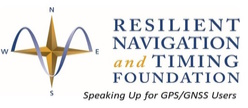Blog Editor’s Notes:
Really interesting article from “Inside GNSS” below. Until now, the US Department of Transportation (DOT) has had the lead on evaluating the possibility of interference with GPS services from transmissions on adjacent frequencies, like those proposed by Lightsquared and its successor company, Ligado. DOT has done several studies and has always been very transparent. Now, suddenly, there is another study by a different government agency (or agencies). One wonders why that is necessary. Perhaps different government agencies have different motivation and goals (that was certainly our experience when we were in government).
It seems to us that there are really two ways to look at this.
In an ideal world Lightsquared/Ligado would be able to transmit as they want on frequencies adjacent to GPS without interfering with the functionality of any GPS receivers. This would be because all the receivers would be built to a standard that would block out signals leaking over from other bands. These receivers would also be much more resistant to jamming and spoofing than most of those in use now. They would also be more expensive.
In the real world, though, there are millions, if not billions, of inexpensive, unsophisticated receivers in use for all kinds of applications, many of them in critical infrastructure.
So in which world should the tests be conducted, and how should they be evaluated?
Perhaps a better question would be – do America or Ligado really want to go there?
Sure there is the chance to make a a bunch of money. But if their transmissions do end up interfering with millions of GPS receivers, the pain for both America and Ligado will be severe and long lasting.
Surprise GPS Receiver Tests Involving Ligado Spectrum Effort
Inside GNSS News
A government agency is poised to release a surprise test plan for GPS receivers that appears to incorporate a highly controversial yardstick for determining when a service in adjacent frequencies interferes with GPS signals.
Devised without public notice and with limited input from the GPS community, the “LTE Impacts on GPS Test and Metrology Plan” was developed under a cooperative agreement with Ligado, a company whose earlier plans to recategorize frequencies close to the satellite navigation band were shown to interfere with GPS receivers.
Inside GNSS has confirmed that the plan developed by the National Advanced Spectrum and Communications Test Network (NASCTN) was crafted under a Cooperative Research and Development Agreement (CRADA) with Ligado, the reconstituted and renamed LightSquared.
The plan, which was not announced in the Federal Register or posted online in draft form for review, apparently will be posted in its final form on the NASCTN website this week — in fact, the set-up for the tests has already started, Inside GNSS has learned from a source.
“It [NASCTN] is a fee for service organization,” explained another source familiar with the issue. “An external client or customer comes in and asks for testing to be done, and then they pay the bill but they don’t get to write the test plan at all. That’s what the government does.”
The sponsor, in this case Ligado, defines the scope of the project, they said.

